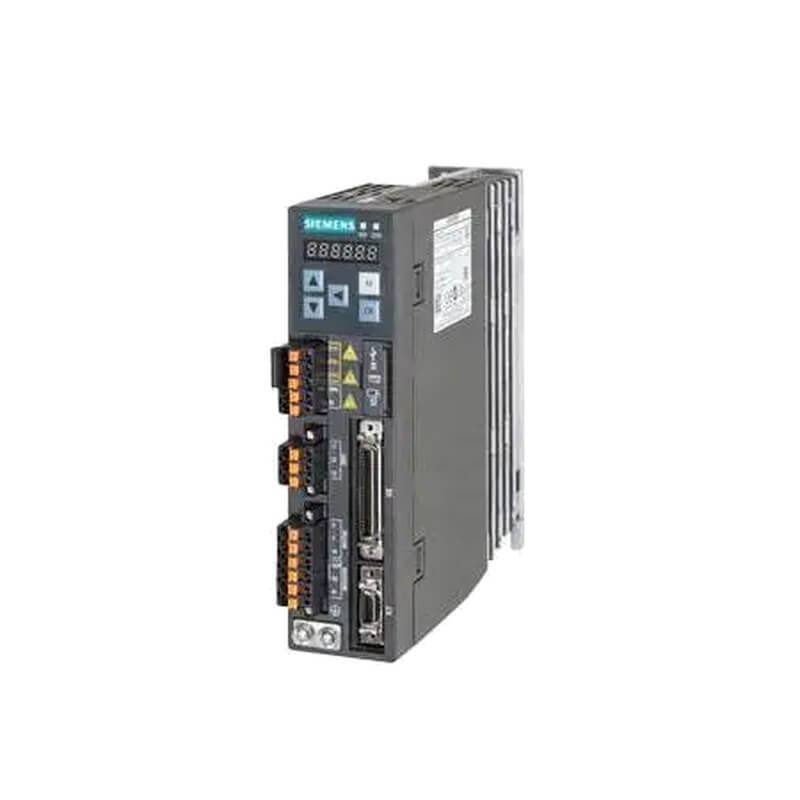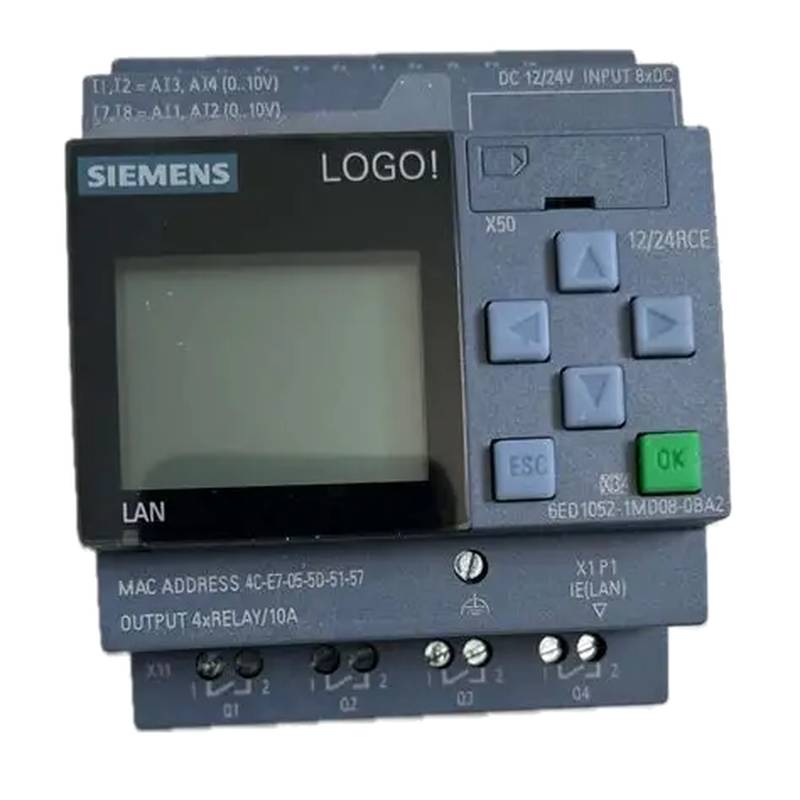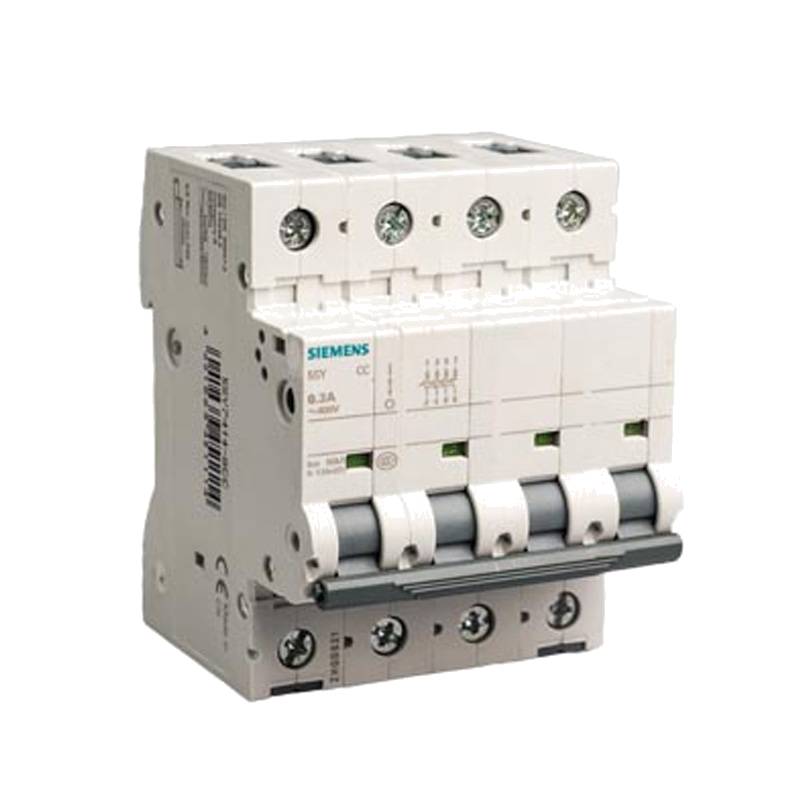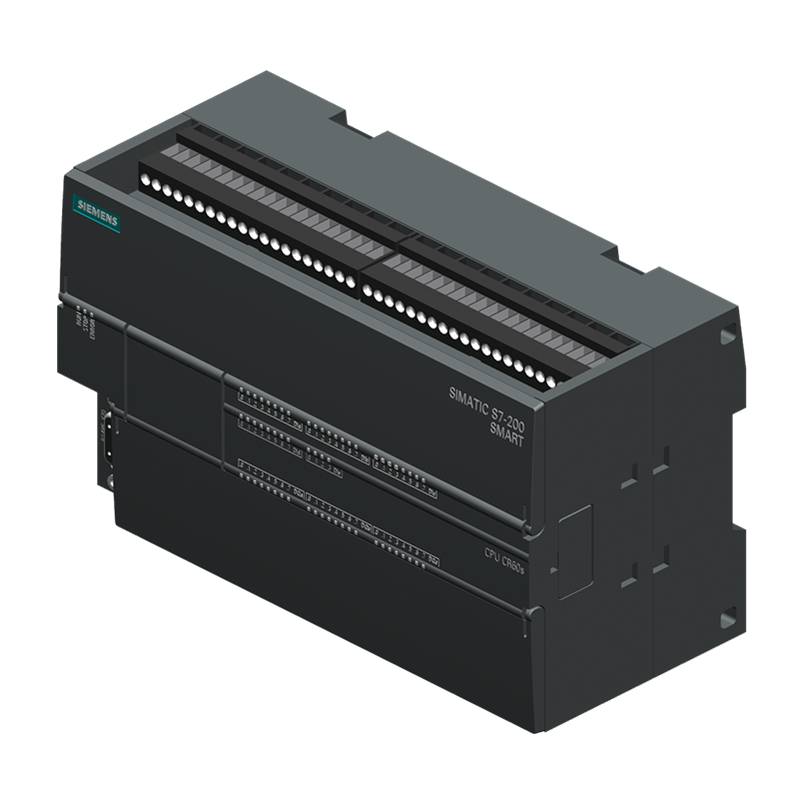
The SIEMENS 6SL3210-5FE13-5UA0 V90 High-Performance Servo Drive is engineered for demanding industrial automation tasks, offering a potent combination of precision, efficiency, and advanced control capabilities. This 3.5kW servo drive distinguishes itself with exceptional dynamic response, integrated safety functions, and seamless connectivity, making it a cornerstone for sophisticated motion control applications. Its robust design and Siemens' renowned reliability ensure superior performance in a wide array of manufacturing environments.
Product Specifications
| Feature | Specification |
| :---------------- | :------------------------------------------- |
| Model Number | 6SL3210-5FE13-5UA0 |
| Series | SINAMICS V90 |
| Power Rating | 3.5 kW |
| Voltage | 380-480V 3 AC |
| Output Current | 10.5 A |
| Communication | PROFINET / PROFIBUS (optional) |
| Encoder Support | Incremental, SINAMICS K., TTL, EnDat 2.0 |
| Braking Resistor | Integrated (depending on model variant) |
| Protection Class | IP20 |
| Dimensions | Varies by frame size (check datasheet) |
| Operating Temp. | 0 to +50°C |
Core Features & Market Positioning
The SINAMICS V90 series, and specifically the 6SL3210-5FE13-5UA0, is positioned as a high-performance, yet cost-effective solution for a broad spectrum of motion control needs. Its key differentiator lies in its advanced control algorithms, which provide highly accurate positioning and smooth motion profiles, crucial for applications like packaging machinery, material handling, and CNC machines. The drive integrates seamlessly with Siemens' broader automation ecosystem, including SIMATIC PLCs and SIMOTION, offering a unified platform for complex automation projects. Its dynamic performance, characterized by rapid response times and high overload capability, allows for increased throughput and improved efficiency in production lines. Furthermore, the drive's modular design and integrated safety functions, such as STO (Safe Torque Off), enhance operational safety and reduce the need for external safety components, contributing to a lower total cost of ownership.
Key Application Scenarios
This SIEMENS V90 servo drive, the 6SL3210-5FE13-5UA0, excels in applications demanding precise and dynamic motion control. It is widely adopted in the packaging industry for high-speed pick-and-place operations and precise label application. In material handling, it drives conveyor systems, robotic arms, and automated guided vehicles (AGVs) where accurate positioning is paramount. The machine tool sector benefits from its precise speed and position control for CNC machining centers, enabling intricate cuts and high surface finishes. Furthermore, its robust performance makes it suitable for printing presses, textile machinery, and general industrial automation where reliable and efficient motion is critical for productivity and product quality.
Practical System Integration Guidance
Integrating the SIEMENS 6SL3210-5FE13-5UA0 V90 servo drive into an existing system is streamlined through its versatile communication options and intuitive parameterization. For connection to a PLC, PROFINET or PROFIBUS are common choices, enabling real-time data exchange and diagnostics. Wiring involves connecting the mains power, motor, and encoder signals according to the drive's manual, paying close attention to grounding and shielding to prevent interference. Commissioning is typically performed using Siemens' TIA Portal software, which allows for motor data identification, parameter setup, and axis configuration. Basic motion control functions can be programmed directly within the PLC or via the drive's internal motion control functions for simpler tasks. The drive supports various encoder types, ensuring compatibility with a wide range of Siemens and third-party motors, simplifying retrofitting and new installations.
Operation and Risk Mitigation
Safe and efficient operation of the SIEMENS 6SL3210-5FE13-5UA0 V90 servo drive relies on adhering to operational guidelines and understanding its fault diagnostics. Safety functions, such as Safe Torque Off (STO), must be correctly implemented in the control system to prevent unexpected motor starts, a critical requirement in industrial settings. During operation, monitoring drive parameters like temperature, current, and voltage via the HMI or TIA Portal is essential for early detection of potential issues. Common fault codes, such as F0001 (overcurrent) or F0002 (overvoltage), often indicate external issues like motor faults or power supply problems, while internal faults might point to drive malfunctions. Proper ventilation and adherence to ambient temperature limits are crucial for preventing thermal overload and ensuring the longevity of the drive.
Scalability & Long-Term Value
The SIEMENS 6SL3210-5FE13-5UA0 V90 servo drive offers significant scalability and long-term value due to its integration within the broader Siemens automation portfolio. Its compatibility with various Siemens PLCs (e.g., SIMATIC S7 series) and motion control systems (e.g., SIMOTION) allows for easy expansion of automation capabilities as production needs evolve. The drive can be part of a larger industrial control system, supporting the transition towards Industry 4.0 and the Industrial Internet of Things (IIoT). Its ability to communicate over standard industrial networks facilitates data logging, remote monitoring, and predictive maintenance, enhancing operational intelligence and reducing downtime. Siemens' commitment to product lifecycle management ensures ongoing support and availability of spare parts, safeguarding the long-term investment in these drives.
Frequently Asked Questions (FAQs)
What are the primary benefits of the SIEMENS 6SL3210-5FE13-5UA0?
This drive offers high dynamic performance and precision motion control, ideal for complex automation. It integrates advanced safety features like STO, simplifying safety system design and reducing costs. Its robust construction ensures reliability in demanding industrial environments.
It provides excellent energy efficiency, contributing to lower operational expenses. The drive's flexible communication options allow seamless integration into various automation architectures. Its precise control capabilities enhance product quality and throughput.
The SIEMENS V90 drive supports a wide range of motors and encoders, offering system design flexibility. Its comprehensive diagnostics and troubleshooting tools minimize downtime. It's backed by Siemens' global support network.
How do I connect a motor to the SIEMENS 6SL3210-5FE13-5UA0?
Connect the motor power cables (U, V, W) to the corresponding terminals on the drive. Ensure proper shielding and grounding for all motor cables to prevent electromagnetic interference. Consult the product manual for specific torque requirements for terminal connections.
Connect the motor encoder feedback cable to the designated encoder input on the drive. Verify the encoder type (e.g., TTL, EnDat) matches the drive's configuration to ensure accurate position feedback. Correct wiring is critical for closed-loop control accuracy.
Before powering up, double-check all connections for correctness and security. Perform an insulation resistance test on the motor and cabling. Follow the commissioning procedure in TIA Portal to auto-tune the motor parameters.
What are common troubleshooting steps for SIEMENS V90 servo drives?
Check for active fault codes displayed on the drive or in TIA Portal; these codes provide specific diagnostic information. Review the fault code list in the manual to understand the root cause. Common issues include overcurrent or overvoltage.
Verify motor connections and integrity; issues with the motor itself or its cabling can trigger drive faults. Inspect encoder connections and signal quality. Ensure the motor is correctly tuned within the drive parameters.
Confirm the power supply is stable and within the drive's voltage tolerance. Check ambient temperature and ventilation to rule out thermal issues. If problems persist, consult Siemens support or a qualified technician.
What communication protocols are supported by the 6SL3210-5FE13-5UA0?
This V90 servo drive primarily supports PROFINET and PROFIBUS DP for industrial Ethernet and fieldbus communication. These protocols enable real-time data exchange between the drive and PLCs for motion control and diagnostics. They are standard in modern automation.
Option modules can be used to enable other fieldbus systems if required for specific network architectures. This provides flexibility for integrating the drive into diverse plant-wide communication setups. Always verify compatibility of option modules.
For basic setup and diagnostics, serial communication interfaces might also be available or usable through engineering tools like TIA Portal. This allows for local configuration and parameter adjustments. Network selection depends on project requirements.
How can I configure encoder feedback for this drive?
Select the correct encoder type in the drive parameters to match the motor's encoder. For incremental encoders, configure resolution and signal type (e.g., TTL). For absolute encoders like EnDat, ensure the correct protocol is selected.
During commissioning in TIA Portal, the drive typically performs an encoder recognition routine. This auto-detection simplifies setup and confirms proper wiring and communication. Manual parameterization is also possible if auto-detection fails.
Ensure the encoder cable is properly shielded and connected to avoid signal degradation or noise. Incorrect encoder setup will lead to positioning errors and performance issues. Always refer to the specific encoder datasheet and drive manual.
What is the significance of STO (Safe Torque Off) on this drive?
STO is a fundamental safety function that safely disconnects power to the motor, preventing rotation. It is activated by an external safety signal, ensuring that the motor cannot start unexpectedly during maintenance or hazardous situations. This is a critical safety standard.
Implementing STO eliminates the need for external contactors for safe torque off, simplifying wiring and reducing cabinet space. It provides a highly reliable and fast-acting safety mechanism according to safety integrated standards. This reduces overall system complexity.
STO ensures compliance with machinery safety directives and standards, crucial for machine builders and end-users. It is typically integrated into the drive's internal safety functions, accessible via dedicated terminals or safety I/O modules. Proper integration is vital.
What are the power and voltage requirements for the SIEMENS 6SL3210-5FE13-5UA0?
The 6SL3210-5FE13-5UA0 model operates on a 3-phase AC power supply ranging from 380V to 480V. It is designed for industrial power grids and requires a stable, reliable power source within this specified range. Ensure your power feed matches these requirements.
The drive has a nominal output power rating of 3.5 kW. This specifies the continuous power the drive can deliver to the motor. It also features a high overload capability for dynamic acceleration and deceleration phases, allowing transient power demands beyond its nominal rating.
Ensure the incoming power supply is properly protected with appropriate circuit breakers or fuses. Harmonic distortion on the power line should be minimized using filters or reactors if necessary. Correct power connection prevents drive damage and ensures optimal performance.
Can this drive be used with Siemens SIMATIC PLCs?
Yes, the SIEMENS 6SL3210-5FE13-5UA0 is designed to integrate seamlessly with Siemens SIMATIC S7 series PLCs. This integration is typically achieved using PROFINET or PROFIBUS communication modules. This allows for synchronized control and data exchange.
Using SIMATIC PLCs with the V90 drive allows for centralized control and monitoring of motion axes within a broader automation system. The TIA Portal engineering framework provides tools for easy configuration, programming, and diagnostics of both the PLC and the drive. This unified approach simplifies development.
This tight integration provides significant advantages in terms of performance, diagnostics, and commissioning time. It allows for complex motion profiles to be programmed and executed efficiently, leveraging the strengths of both the PLC and the servo drive. This is a common setup for Siemens automation solutions.
What is the role of TIA Portal in commissioning this drive?
TIA Portal (Totally Integrated Automation Portal) is Siemens' engineering software used for configuring, programming, and commissioning the SINAMICS V90 drive. It allows users to set up drive parameters, motor data, and motion control functions in a unified environment. This simplifies the overall engineering process.
During commissioning, TIA Portal facilitates motor identification and auto-tuning, ensuring optimal performance and precise control. It also allows for the configuration of communication settings, safety functions, and diagnostic parameters, enabling users to customize the drive's behavior to specific application needs. This comprehensive tool streamlines setup.
The software provides powerful diagnostic tools within TIA Portal for troubleshooting and maintenance. Users can monitor drive status, analyze faults, and adjust parameters remotely or online, significantly reducing downtime and improving system reliability. TIA Portal is essential for efficient V90 drive setup.
What are the typical application industries for the SIEMENS V90 servo drive?
The SIEMENS V90 servo drive, including the 6SL3210-5FE13-5UA0 model, is commonly found in the packaging industry. It is used for high-speed automation tasks such as filling, sealing, and labeling machines where precise and rapid motion control is essential for throughput. This ensures consistent product quality.
Material handling and logistics also heavily utilize this drive. Applications include automated guided vehicles (AGVs), robotic pick-and-place systems, and automated warehousing solutions that require accurate positioning and dynamic movement of goods. Its performance enhances efficiency in these operations.
Furthermore, the machine tool sector benefits from its precision for applications like CNC machines and automated assembly lines. It's also employed in printing, textile, and other general industrial automation fields where reliable and efficient motion control is a key requirement for productivity.























